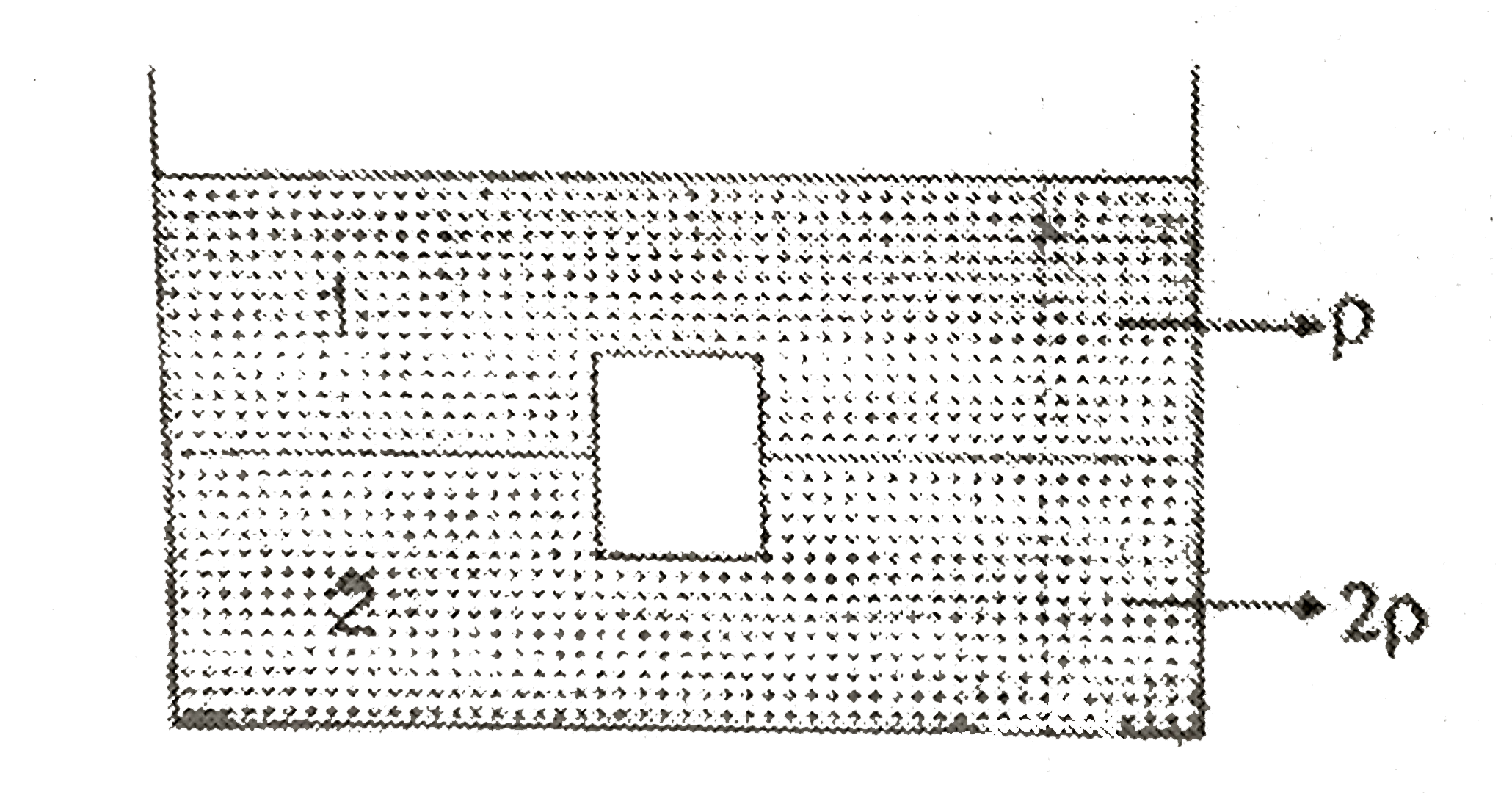The system of simple pendulum is immersed in liquid of a density ρl. Prove that its new period of oscillation inside the liquid will be T=2π ⎷lg(1−ρlρs) where ρs is density of bob.
To prove that the new period of oscillation of a simple pendulum immersed in a liquid of density ρl is given by
T=2π
⎷lg(1−ρlρs)
where ρs is the density of the bob, we will follow these steps:
Step 1: Understand the Time Period of a Simple Pendulum in Air
The time period T of a simple pendulum in air is given by the formula:
T=2π√lg
where l is the length of the pendulum and g is the acceleration due to gravity.
Step 2: Consider the Effect of the Liquid
When the pendulum bob is immersed in a liquid, the effective gravitational force acting on it changes due to the buoyant force exerted by the liquid. The buoyant force Fb can be expressed as:
Fb=ρl⋅V⋅g
where V is the volume of the bob.
Step 3: Relate the Mass of the Bob to its Density
The mass m of the bob can be expressed in terms of its density ρs and volume V:
m=ρs⋅V
Step 4: Determine the Effective Gravitational Force
The net force acting on the bob when it is submerged in the liquid is given by:
Fnet=mg−Fb=mg−ρl⋅V⋅g
Substituting m from the previous step, we get:
Fnet=ρs⋅V⋅g−ρl⋅V⋅g=Vg(ρs−ρl)
Step 5: Calculate the Effective Gravitational Acceleration
The effective gravitational acceleration geffective can be defined as:
Fnet=m⋅geffective
Thus, we have:
Vg(ρs−ρl)=ρs⋅V⋅geffective
Dividing both sides by V:
geffective=g(1−ρlρs)
Step 6: Substitute geffective into the Time Period Formula
Now that we have the effective gravitational acceleration, we can substitute it back into the formula for the time period of the pendulum:
T=2π√lgeffective=2π
⎷lg(1−ρlρs)
Conclusion
Thus, we have proved that the new period of oscillation of the simple pendulum immersed in a liquid is:
T=2π
⎷lg(1−ρlρs)
---
⎷lg(1−ρlρs)
The time period T of a simple pendulum in air is given by the formula:
When the pendulum bob is immersed in a liquid, the effective gravitational force acting on it changes due to the buoyant force exerted by the liquid. The buoyant force Fb can be expressed as:
The mass m of the bob can be expressed in terms of its density ρs and volume V:
The net force acting on the bob when it is submerged in the liquid is given by:
The effective gravitational acceleration geffective can be defined as:
Now that we have the effective gravitational acceleration, we can substitute it back into the formula for the time period of the pendulum:
⎷lg(1−ρlρs)
Thus, we have proved that the new period of oscillation of the simple pendulum immersed in a liquid is:
⎷lg(1−ρlρs)
Topper's Solved these Questions
- OSCILLATIONSBOOK - NARAYNACHAPTER - OSCILLATIONSEXERCISE - EVALUATE YOURSELF - 1
7 Videos
- OSCILLATIONSBOOK - NARAYNACHAPTER - OSCILLATIONSEXERCISE - EVALUATE YOURSELF - 2
4 Videos
- OSCILLATIONSBOOK - NARAYNACHAPTER - OSCILLATIONSEXERCISE - DAMPED OSCILLATIONS
1 Videos
- NEWTONS LAWS OF MOTIONBOOK - NARAYNACHAPTER - NEWTONS LAWS OF MOTIONEXERCISE - PASSAGE TYPE QUESTION
6 Videos
- PHYSICAL WORLDBOOK - NARAYNACHAPTER - PHYSICAL WORLDEXERCISE - C.U.Q
10 Videos
Similar Questions
The time period of a sample pendulum is T. Now the bob is immersed in a liquid of density σ. If density of material of bob is ρ, what will be the time period of the pendulum.
View SolutionA body of density ρ floats with volume V1 of its total volume V immersed in a liquid of density ρ1 and with the remainder of volume V2 immersed in another liquid of density ρ2 where ρ1>ρ2. Find the volume immersed in two liquids. (V1 and V2).
View Solution
Knowledge Check
A simple pendulum of length 4.9m is immersed in a liquid of density ρ=0.4kg/m3. Then the time period of pendulum is (density of bob =0.8kg/m3)
AπsB3πsC2πsDπ/2sA ball of density ρ is released from deep inside of a liquid of density 2ρ. It will move up
Awith an increasing accelerationBwith a decreasing accelerationCwith a constant accelerationDwith zero accelerationA plank of area of cross-section A is half immersed in liquid 1 of density ρ and half in liquid 2 of density 2ρ. What is period of osciallation of the plank if it is slightly depressed downwards?
 A(2π√mρAgBπ√mρAgC2π√3m2ρAgD2π√m3ρAg
A(2π√mρAgBπ√mρAgC2π√3m2ρAgD2π√m3ρAg
A plank of area of cross-section A and mass m is immersed in two immiscible liquids such that L4 part of the plank is immersed in liquid of density 2ρ and 3L4 part immersed in liquid of density ρ. The period of oscillation of the plank if it is slightly depressed downwards is 2π√mβAρg. Find β.
'(##CEN_KSR_PHY_JEE_C16_E01_033_Q17##)'
View Solution(a). Discuss two situations in daily life where we apply the concept of pressure.
(b). A body of density ρ is dropped gently on the surface of a liquid of density ρ' (ρ' being less than ρ). Show That it will reach the bottom of the liquid after a time √2dρg(ρ−ρ'), where g is acceleration due to gravity and d is the depth of the liquid.
View SolutionA body of density ρfloats with a volume V1 of its total volume V immersed in one liquid of density ρ1 and with the remainder of volume V2 immersed in another liquid of density ρ2, where ρ1>ρ2. Find the relative volumes immersed in two liquids.
View SolutionA body weighs W1 in a liquid of density ρ1 and W2 in a liquid of density ρ2. What is the weight of body in a liquid of density ρ3?
View SolutionA drop of liquid of density ρ is floating half-immersed in a liquid of density d. If ρ is the surface tension the diameter of the drop of the liquid is
View Solution
